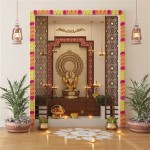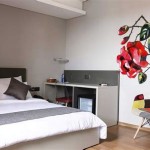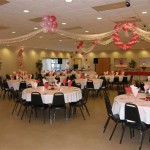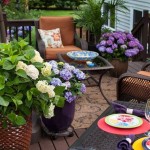Traditional Room Decorating Ideas: A Guide to Timeless Elegance
Traditional room decorating embodies a sense of history, comfort, and enduring style. Unlike modern aesthetics, which often prioritize minimalism and clean lines, traditional design emphasizes classic furnishings, rich colors, and detailed ornamentation. This approach creates spaces that feel warm, inviting, and reflect a timeless elegance that transcends fleeting trends. Recreating this aesthetic requires careful consideration of specific elements, from furniture selection to the use of textiles. This article provides a comprehensive overview of key aspects of traditional room decorating, offering insights to help create spaces that exude sophistication and charm.
Embracing Classic Furnishings
The cornerstone of traditional decorating lies in the selection of furniture. Pieces often feature intricate details, such as carved legs, ornate hardware, and gracefully curved silhouettes. Solid wood is a preferred material, adding to the sense of quality and longevity associated with this style. Overstuffed sofas and armchairs, often upholstered in luxurious fabrics like velvet, brocade, or damask, provide ample seating and create a sense of comfort. Consider the timeless appeal of pieces such as Chesterfield sofas with their rolled arms and button tufting, or Queen Anne chairs characterized by their elegant, curved lines. Dining tables, typically crafted from solid wood, showcase a sense of solidity and permanence. When choosing furniture, aim for a cohesive aesthetic that reflects a sense of history and refined taste. Careful consideration of scale and proportion is critical, ensuring that each piece complements the others and fits appropriately within the room's dimensions.
Color Palettes: A Symphony of Rich Tones
Color plays a significant role in defining the traditional aesthetic. While variations exist depending on regional styles, the core principles remain consistent: a preference for rich, warm, and often muted tones. Think of deep reds, such as burgundy and claret, paired with creamy whites and golds. Earthy greens, such as olive and forest, can create a sense of tranquility, while blues, especially navy and indigo, offer a touch of sophistication. Accent colors, such as jewel tones like emerald or sapphire, are frequently incorporated into the design through artwork, pillows, and accessories. Avoid overly bright or neon hues, as they tend to clash with the overall sense of subtlety and refinement that defines traditional design. The use of patterned wallpaper, often with damask, floral, or stripe motifs, can add depth and visual interest to the space, providing a textural contrast to the walls.
The Role of Textiles and Fabrics
Textiles are integral to traditional decorating, contributing to both the visual appeal and the tactile experience of the room. Luxurious fabrics such as velvet, silk, linen, and damask are common choices, providing a sense of richness and opulence. Drapes, often floor-length and lined, can add a touch of drama and control the amount of natural light entering the space. These drapes are frequently adorned with tassels, tiebacks, and valances, which are decorative elements that add further visual interest. Upholstery fabrics on sofas, armchairs, and ottomans often feature intricate patterns, such as floral prints, stripes, or geometric designs. Pillows are essential for enhancing the comfort and visual appeal of seating areas. Layering different textures and patterns can create depth and visual interest, ensuring that the overall aesthetic is both inviting and sophisticated.
Incorporating Decorative Accessories
Accessories are crucial in completing a traditional room. They add personality, charm, and visual interest. Mirrors, often framed in ornate gilded or carved frames, can reflect light and create the illusion of more space. Artwork, including oil paintings, framed prints, and antique maps, provides focal points and reflects the homeowner's tastes. Decorative objects, such as porcelain figurines, antique clocks, and silver candlesticks, can be strategically placed on shelves, mantels, and side tables to add character. Area rugs, particularly those with oriental or Persian designs, are often incorporated into traditional rooms to define spaces, add warmth, and enhance the overall aesthetic. The selection of accessories should complement the overall color palette and style of the room, creating a cohesive and well-curated appearance.
Lighting: Creating Ambiance
Lighting is paramount in creating the right ambiance for a traditional setting. Traditional rooms often feature a layered lighting scheme that combines ambient, task, and accent lighting. Chandeliers and sconces, often made of crystal, brass, or bronze, provide ambient illumination, while table lamps and floor lamps offer task lighting for reading and other activities. Lampshades, often made of fabric, can diffuse the light and add a warm, inviting glow. Consider incorporating dimmer switches to allow for the adjustment of the light intensity, creating different moods as desired. Fireplaces are frequently found in traditional living rooms, providing both warmth and a focal point. The use of candles and lanterns can further enhance the ambiance of the room, creating a sense of intimacy and relaxation.
Architectural Details and Ornamentation
Traditional rooms often feature architectural details that add to their character and grandeur. Crown molding, wainscoting, and detailed trim work are common features that enhance the visual appeal of the walls and ceilings. Fireplaces, often with ornate mantels, serve as focal points and add a sense of warmth and comfort. Arched doorways and windows can add a touch of elegance, while built-in bookshelves and cabinets provide both functionality and visual appeal. The use of architectural details adds a sense of history and craftsmanship that is central to the traditional aesthetic. It is essential to consider the scale and proportion of these details, ensuring that they complement the overall design of the room.
:strip_icc()/102670787-d2b264d36b054ab188246ec947f52cae.jpg?strip=all)
17 Traditional Living Room Ideas With Classic Design Details

Kathee Traditional Design Living Room Designs Corner
:strip_icc()/102283247-bead05c7199743b09e957939769e9efa.jpg?strip=all)
17 Traditional Living Room Ideas With Classic Design Details

30 Traditional Living Room Ideas To Decorate Your Foyr

Traditional Interior Design Ideas For Your Home Designcafe
:strip_icc()/102262791-c035950da0f1439da481b903dbddbbf5.jpg?strip=all)
17 Traditional Living Room Ideas With Classic Design Details

Traditional Living Room Ideas Classic Decor For Lounges
:strip_icc()/102270588-a82ee2f803f244cc8a5222cc41b06f1e.jpg?strip=all)
17 Traditional Living Room Ideas With Classic Design Details

30 Traditional Living Room Ideas To Decorate Your Foyr

19 Traditional Living Room Design Ideas Havenly Blog Interior
Related Posts







